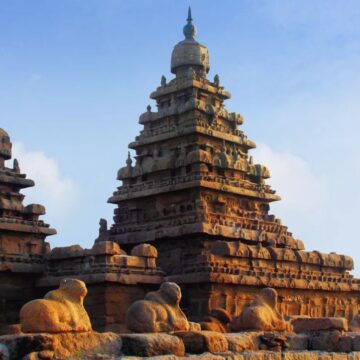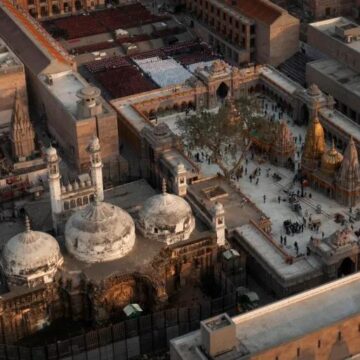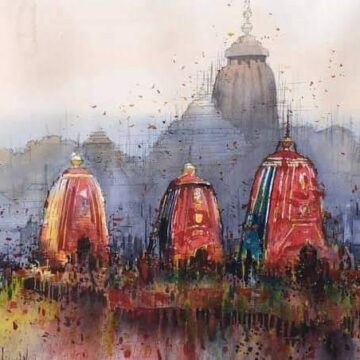Religious tourism, as against the popular perception, ends up hurting the very soul and nature of the teertha.
Category: <span>Temple</span>
How long did the demolition of the Kashi-Vishwanath Temple take?
In this paper, D Shrinivas uses the Maasir-i-Alamgiri of Saqi Mustad Khan to determine the dates on which the order for the destruction was given and the time it took for the destruction to actually be carried out. Based upon the above he hypothesizes about the resistance that Aurangzeb’s military likely faced from the local Hindu populace while carrying out the orders to destroy this Hindu temple.
Divine Nexus: Salience of Hindu Temples
"To fully understand the social significance of Mandirs, one must delve into their profound philosophical underpinnings, historical moorings and cultural importance. Our Mandirs are the veritable embodiments of our culture, philosophy, and spirituality. Rooted in ancient Hindu tradition, Mandirs play a vital role in shaping the social and cultural fabric of India."
The Immersive Experience of the Jagannatha Ratha Yatra
The Jagannatha Ratha Yatra of Puri, Odisha, while not the only such event in the country, is certainly the most prominent and important one. The siblings Jaganatha, Balabhadra and Subhadra (Krishna with His elder brother and younger sister) are brought out and travel to their aunt's house, known as the Gundicha temple, where they stay for a two week period.
Ratnakar Sadasyula throws light on the lesser known aspects of the Ratha Yatra, its traditions and procedures, in detail.
Agrāharas – The Building Blocks of Dharmik Economy
Agrahāras have long been associated with the Hindu temple, popularly understood as residential housing schemes for brāhmaṇa families around the main temple. Popular narrative has sought to classify them as elitist brahminical dwellings designed to keep non-brāhmaṇas out. The notion, however, deviates from the reality - the primary right of the king over land is exercised by collecting a portion of produce as a ‘prime’ (agra) tax. When such tax revenue is gifted to a donee resulting in a ‘loss’ (hāra) to the state, it is called agrahāra. The lands gifted to brāhmaṇas are called brahmadéyas. These lands are typically agricultural lands that were already brought to revenue. Gifting of such lands has the effect of transferring the tax revenue therefrom to the donees. The brahmadéyas, are also not exclusively brahminical settlements.
Lakshmi Prasad J explores all this, and the importance and position of agrahāras in the ancient dharmik economy, in the first part of this series.
Unseen Temples of India – Legacy and Narrative – Part 2
Building a separate structure to house murtis, carriers of divinity, for personal and public worship of deities is an old tradition prevalent in India.
Manisha Chitale takes us through the history and evolution of temple architecture in the country and how temples have shaped the Sanatana dharmik civilisation.
Unseen Temples of India – Legacy and Narrative – Part 1
Building a separate structure to house murtis, carriers of divinity, for personal and public worship of deities is an old tradition prevalent in India.
Manisha Chitale takes us through the history and evolution of temple architecture in the country and how temples have shaped the Sanatana dharmik civilisation.





